 W
WAl-Abbas ibn Ali ibn Abi Talib, also known as Abu al-Fadhl and Qamar Bani Hashim, was a son of Ali and Fatima bint Hizam, commonly known as Umm al-Banin.
 W
WʿAbd al-Rahman ibn Muljam al-Murādiyy was a Khariji known for assassinating Ali, the fourth Caliph of Islam.
 W
WʿAbd Allāh ibn Khāzim al-Sulamī was the Umayyad governor of Khurasan in 662–665 and late 683/84, before becoming the nominal Zubayrid governor of the same province between 684 and his death.
 W
WAbu al-Aswad al-Du'ali, whose full name is Abū al-Aswad Ẓālim ibn ʿAmr ibn Sufyān ibn Jandal ibn Yamar ibn Hīls ibn Nufātha ibn Adi ibn al-Dīl ibn Bakr, surnamed al-Dīlī, or al-Duwalī, was the poet companion of Ali bin Abu Talib and grammarian. When the great expansion of the Islamic Empire, with millions of newly-converted non-native speakers wishing to read and recite the Qurʾan, made the adoption of a formalised grammar system necessary, tradition honors al-Duʾali as the father of Arabic grammar. His science of grammar led in turn, to the establishment of the first great School of grammarians at Basrah, that would be rivalled only by the school at Kufah. Al-Du'alī is said to have introduced the use of diacritics to writing, and to have written the earliest treatises on Arabic linguistics, and grammar (nahw). He had many students and followers.
 W
WAbu Ayyub al-Ansari — born Khalid bin Zayd bin Kulayb bin Thaalba in Yathrib — hailed from the tribe of Banu Najjar, was a close companion and the standard-bearer of the Islamic prophet Muhammad. He was named after Prophet Job. Abu Ayyub was one of the Ansar of the early Islamic history, those who supported Muhammad after the hijra (migration) to Medina in 622. The patronym Abu Ayyub, means father (abu) of Ayyub. Abu Ayyub died of illness during the First Arab Siege of Constantinople.
 W
WAbu Hudhaifah ibn al-Mughirah was a sahaba of Muhammad and the owner of Sumayyah bint Khabbat.
 W
WAbu Ubaidah ibn al-Jarrah, fully Abū ‘Ubaydah ‘Āmir ibn ‘Abdillāh ibn al-Jarāḥ, was one of Companions of the Islamic prophet Muhammad. Mostly known for being one of the "Ten Promised Paradise". He remained commander of a large section of the Rashidun Army during the time of the Rashid Caliph Umar and was on the list of Umar's appointed successors to the Caliphate.
 W
WʿĀʾishah bint Abī Bakr, also transcribed as Aisha or variants, was Muhammad's third and youngest wife. In Islamic writings, her name is thus often prefixed by the title "Mother of the Believers", referring to the description of Muhammad's wives in the Qur'an.
 W
WKhawla bint al-Azwar was an Arab female warrior during the life of Muhammad. She has been described as one of the greatest female warriors in history and was once compared with Khalid Bin Walid by the opponents in the battlefield. She was the sister of Dhiraar bin Al-Azwar, the soldier and commander of the Rashidun army during the 7th century Muslim conquest. Born sometime in the seventh century, daughter of Malik or Tareq Bin Awse, one of the chiefs of the Banu Assad tribe, Khawlah was well known for her bravery in campaigns of the Muslim conquests in parts of what are today Syria, Jordan, and Palestine. She fought side by side with her brother Dhirrar in many battles, including the decisive Battle of Yarmouk in 636 against the Byzantine empire. On the 4th day of the battle she led a group of women against the Byzantine army and defeated its chief commander and later was wounded during her fight with a Greek soldier.
 W
WAl-Mukhtar ibn Abi Ubayd Al-Thaqafi was a pro-Alid revolutionary based in Kufa, who led a rebellion against the Umayyad Caliphate in 685 and ruled over most of Iraq for eighteen months during the Second Fitna.
 W
WAli al-Akbar ibn Al-Husayn, commonly known as simply Ali al-Akbar, was the son of Al-Husayn ibn Ali, the third Shia Imam, and Umm Layla. He was killed at the age of 18 on the day of Ashura, in the Battle of Karbala’. According to Jean Calmard writing in Iranica, ‘Ali al-Akbar's reputation as a valiant warrior of the Household of Muhammad might have preceded that of Al-‘Abbas ibn ‘Ali.
 W
WAbdullah Ali al-Asghar ibn Al-Husayn, or simply Ali Asghar, was the youngest child of Al-Husayn and Rubab bint Imra’ al-Qays. He was martyred during the Battle of Karbala, and is commemorated in shia as the "personified quintessence of the innocent victim."
 W
WAli ibn Husayn Zayn al-Abidin, also known as al-Sajjad or simply Zayn al-Abidin, was the fourth Imam in Shiʻi Islam after his father Husayn ibn Ali, his uncle Hasan ibn Ali, and his grandfather, Ali. He was born, according to some sources, from Shahrbanu.
 W
WHilal ibn Ali, also known as Muḥammad al-Awsaṭ, was one of the sons of Ali. His maternal grandmother was Zaynab the eldest daughter of Muhammad, and his maternal uncle was Ali. His mausoleum was established in Aran, Kashan, Isfahan province, Iran. His mother, Umamah bint Abu al-'As, was the daughter of Zaynab, and grand-daughter of Muhammad and Khadija bint Khuwaylid.
 W
WAmr ibn Abd al-Wud was a champion of the Quraish tribe, said to have been worth over one thousand soldiers. He is most well known for his role during the Battle of the Trench and was killed by Ali ibn Abi Talib.
 W
WAmr ibn al-As al-Sahmi was the Arab commander who led the Muslim conquest of Egypt and served as its governor in 640–646 and 658–664. The son of a wealthy Qurayshite, Amr embraced Islam in c. 629 and was assigned important roles in the nascent Muslim community by the Islamic prophet Muhammad. The first caliph Abu Bakr appointed Amr as a commander of the conquest of Syria. He conquered most of Palestine, to which he was appointed governor, and led the Arabs to decisive victories over the Byzantines at the battles of Ajnadayn and Yarmouk in 634 and 636.
 W
WAntarah ibn Shaddad al-Absi, also known as ʿAntar, was a pre-Islamic Arab knight and poet, famous for both his poetry and his adventurous life. His chief poem forms part of the Mu'allaqāt, the collection of seven "hanging odes" legendarily said to have been suspended in the Kaaba. The account of his life forms the basis of a long and extravagant romance.
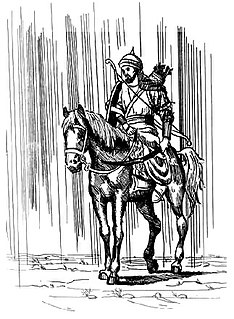 W
WArfajah b. Harthama al-Bariqi was a companion of Muhammad. He was governor of Mosul during the reign of Rashidun Caliph Umar. Abu Bakr dispatched Arfajah with Hudaifa bin Mihsan's corps to fight opponents of Islam in Oman.
 W
WAsmā' bint Abi Bakr, was one of the companions of the prophet Muhammad and half-sister of his third wife Aisha. She is regarded as one of the most prominent islamical figures, as she helped the Prophet during his arduous hijra from Mecca to Medina.
 W
WFatimah bint Asad was the mother of Ali ibn Abi Talib, wife of Abu Talib, and an aunt to the Islamic prophet Muhammad.
 W
WHarith bin Abi Shamir Al-Gassani was an Arab Christian governor of Sham which was in the domain of the Byzantine Empire. He was a contemporary of Muhammad and King of Damascus now in modern-day Syria. He received a letter from Muhammad where he was invited to Islam. Harith was a member of the Christian Arab Ghassanid dynasty, which ruled parts of Sham.
 W
WHafsa bint Sirin was an early female scholar of Islam. She has been called one of the "pioneers in the history of female asceticism in Island".
 W
WAbū Muhammad al-Ḥajjāj ibn Yūsuf ibn al-Ḥakam ibn ʿAqīl al-Thaqafī, known simply as al-Hajjaj ibn Yusuf, was perhaps the most notable governor who served the Umayyad Caliphate. He began his service with the Umayyads under Caliph Abd al-Malik, who successively promoted him as the head of the caliph's shurta, the governor of the Hejaz in 692–694, and the practical viceroy of a unified Iraqi province and the eastern parts of the Caliphate in 694. Al-Hajjaj retained the last post under Abd al-Malik's son and successor al-Walid I, whose decision-making was highly influenced by al-Hajjaj, until his death in 714.
 W
WHasan ibn Hasan, popularly known as al-Hasan al-Muthana, was a great-grandson of Muhammad.
 W
WHisham ibn al-A'as is the son of A'as ibn Wa'il of Banu Sahm and brother of Amr ibn al-A'as and one of the early companions. It is known that he embraced Islam before Hijrah as can be traced from the saying of Umar, yet his exact year of becoming Muslim is unknown. Hisham attempted to migrate to Medina along with Umar but his plans were foiled by his family. Later he succeeded in migrate to Medina along with Ayash.
 W
WRuqayyah bint Al-Ḥusayn, was the daughter of Husayn ibn Ali and Rubab bint Imra al-Qais. Her brothers included Ali Zayn al-Abidin, Ali al-Akbar, and Ali al-Asghar. Her sisters included Fatimah as-Sughra and Fatimah al-Kubra, with the latter also being called 'Sakinah'.
 W
WQaṭari ibn al-Fujaʾa was a Kharjite leader and poet. Born in Al Khuwayr, he ruled over the Azariqa faction of the Kharjites for more than ten years after the death of Nafi ibn al-Azraq in c. 685 CE. He led an uprising against the Umayyad Caliphate for more than 20 years.
 W
WJa'far ibn Abi Talib, also known as Jaʿfar aṭ-Ṭayyār, was a Companion and cousin of the Islamic Nabi (Prophet) Muhammad, and an older brother of Ali.
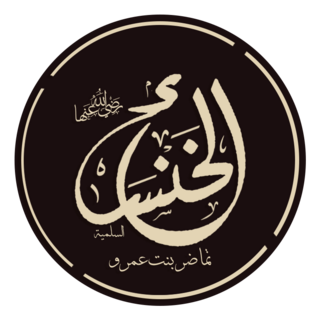 W
WTumāḍir bint ʿAmr ibn al-Ḥārith ibn al-Sharīd al-Sulamīyah, usually simply referred to as al-Khansāʾ was a 7th-century tribeswoman, living in the Arabian Peninsula. She was one of the most influential poets of the pre-Islamic and early Islamic periods.
 W
WKhadijah bint Khuwaylid, commonly known as Khadija, was the first wife and first follower of the Islamic prophet Muhammad. Khadijah was the daughter of Khuwaylid ibn Asad, a leader of Quraysh tribe in Mecca, and a successful businesswoman in her own right.
 W
WKumayl bin Ziyad an-Nakha'i was among the most loyal companions of Imam Ali Ibn Abi Talib. Moreover, Kumayl occupies a prominent position in Shia Islam. Converting to Islam during the time of Islamic prophet Muhammad, he rose to a position of prominence during the caliphates of Uthman and Ali. In the caliphate of Ali, Kumayl flourished and served him in the most disciplined of ways. However, he is recognized for his pious and humble nature as well as preserving Imam Ali's teachings. Kumayl is best known for the du'a (supplication) of Prophet Khidr, which is commonly known by the name du'a Kumayl.
 W
WLubaba bint al-Harith, also known as Umm Fadl, was a prominent early Muslim. Two of her sisters, Maymuna bint al-Harith and Zaynab bint Khuzayma, became wives of Muhammad.
 W
WMalik al-Ashtar, also known as Mālik bin al-Ḥārith al-Nakhaʿīy al-Maḏḥijīy, was one of the most loyal companions of Ali Ibn Abi Talib, cousin of the Islamic prophet Muhammad. Malik al-Ashtar became a Muslim during the time of Muhammad and since then remained an avid and loyal supporter of Muhammad's progeny and Hashemite clan. He rose to a position of prominence during the caliphate of Ali Ibn Abi Talib and participated in several battles, such as the Battle of Jamal and Siffin.
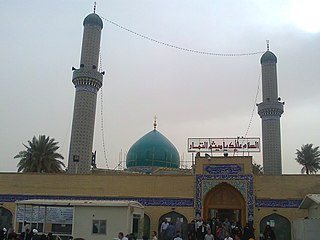 W
WMeesum ibn Yahyā al-Tammār or Meesum al-Tammar was an early Islamic scholar, a companion and disciple of Ali ibn Abi Talib.
 W
WMuadh ibn Jabal was a sahabi (companion) of the Islamic prophet Muhammad. Muadh was an Ansar of Banu Khazraj and compiled the Quran with five companions while Muhammad was still alive. He was known as the one with a lot of knowledge. He was called by Muhammad "the one who will lead the scholars into Paradise."
 W
WAbū Saʿīd al-Muhallab ibn Abī Ṣufra al-Azdī was an Arab general from the Azd tribe who fought in the service of the Rashidun, Umayyad and Zubayrid caliphs between the mid-640s and his death. He served successive terms as the governor of Fars (685–686), Mosul, Arminiya and Adharbayjan (687–688) and Khurasan (698–702). Al-Muhallab's descendants, known as the Muhallabids, became a highly influential family, many of whose members held high office under various Umayyad and Abbasid caliphs, or became well-known scholars.
 W
WMuhammad was an Arab religious, social, and political leader and the founder of Islam in Arabia. According to Islamic doctrine, he was a prophet, sent to preach and confirm the monotheistic teachings of Adam, Abraham, Moses, Jesus, and other prophets. He is believed to be the final prophet of God in all the main branches of Islam, though some modern denominations diverge from this belief. Muhammad united Arabia into a single Muslim polity, with the Quran as well as his teachings and practices forming the basis of Islamic religious belief.
 W
WMuhammad al-Baqir full name Muhammad bin 'Ali bin al-Husayn bin Ali bin Abi Talib, also known as Abu Ja'far or simply al-Baqir (677-733) was the fifth Imam in Shia Islam, succeeding his father Zayn al-Abidin and succeeded by his son Ja'far al-Sadiq. His mother, Fatima Umm abdallah, was the daughter of the second Shia imam, Hasan ibn Ali. So he was the first Imam descended from both grandsons of Muhammad: Hasan ibn Ali and Husayn ibn Ali.
 W
WMuhammad ibn Abi Bakr was the son of Abu Bakr and a companion of the Islamic prophet Muhammad. His mother was Asma bint Umays, who was a widow of Ja'far ibn Abi Talib prior to her second marriage with Abu Bakr. He became the adopted son of Ali, the fourth Rashidun Caliph and the first Imam of Shia Muslims, and became one of his generals.
 W
WMuhammad ibn Ali ibn Abi Talib also known as Muhammad ibn al-Hanafiyyah and surnamed Abu'l-Qasim. He was the third son of Ali ibn Abi Talib, the first Imam of Shi'a Muslims and the fourth Caliph of Sunni Muslims.
 W
WMuhsin ibn Ali, also spelled Mohsin or Mohsen, was a son of Fatimah bint Muhammad and Ali ibn Abi Talib, and thus a maternal grandson of the Islamic prophet Muhammad.
 W
WMus'ab ibn al-Zubayr was an Arab military commander of the Second Fitna. He was a younger brother of Abd Allah ibn al-Zubayr and a son of Zubayr ibn al-Awwam, a companion of the Islamic prophet Muhammad. After the establishment of the Mecca-based, counter-caliphate of his brother, he led an unsuccessful campaign against Umayyad-held Palestine. Later he served as governor of Basra from 686 to 691, with brief interruption. He killed the pro-Alid revolutionary Mukhtar al-Thaqafi in 687 and came to control the whole of Iraq. His policies in Iraq caused his removal from the office by his elder brother, but was restored shortly afterwards. He was killed by the Umayyad forces in the Battle of Maskin four years later.
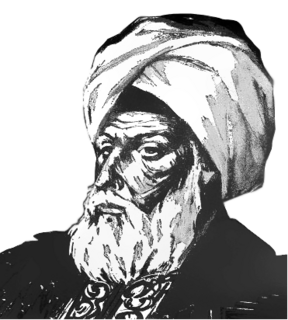 W
WMusa ibn Nusayr served as a Umayyad governor and an Arab general under the Umayyad caliph Al-Walid I. He ruled over the Muslim provinces of North Africa (Ifriqiya), and directed the Islamic conquest of the Visigothic Kingdom in Hispania.
 W
WMusaylimah short for Musaylimah al-Kadhdhāb otherwise known as Maslamah ibn Ḥabīb d.633, was a preacher of Hanifism among the Hanafite Banū Ḥanīfah tribe and one of a series of people who claimed prophethood in 7th-century Arabia. He is considered by current Muslims to be a false prophet.
 W
WAl- Naḍr ibn al-Ḥārith ibn ʿAlqamah ibn Kaladah ibn ʿAbd Manāf ibn Quṣayy was an Arab pagan physician who lived in the same time and region as the Islamic prophet Muhammad. He was captured after the Battle of Badr and then executed. After the battle, Muhammad decided to return to Medina. While Muhammad was returning to Medina, he reportedly received a revelation regarding the distribution of war booty. This per tafsir was the Quran verse Quran 8:41.
 W
WQasim ibn al-Hasan, supported his uncle Husayn Ibn Ali in fighting off the Umayyad forces during the Battle of Karbala where he was killed in his teens.
 W
WRufaida Al-Aslamia was an Islamic medical and social worker recognized as the first female Muslim nurse and the first female surgeon in Islam.
 W
WSa‘id Ibn Al-Musayyib of Medina was among the foremost authorities in jurisprudence (fiqh) among the Taba'een.
 W
WAbū Ḥarb Salm ibn Ziyād ibn Abīhi was a general and statesman of the Umayyad Caliphate, who later defected to the caliphate of Abd Allah ibn al-Zubayr during the Second Muslim Civil War before returning to the Umayyads' ranks. Salm was appointed by Caliph Yazid I as governor of Khurasan and Sijistan in 681. During the course of his governorship, he launched several expeditionary raids into the Central Asian regions of Transoxiana, including Samarkand, and Khwarazm. His successes and generous distribution of war booty among his Khurasani Arab troops gained him wide popularity with them, but after Yazid died, Salm was not able to maintain their loyalty to the Umayyads for long. After his troops and chosen successor, Abd Allah ibn Khazim al-Sulami, gave their allegiance to the rival caliphate of Abd Allah ibn al-Zubayr, Salm made for Basra. There, he ultimately joined Ibn al-Zubayr's camp, but was imprisoned in Mecca by the latter nonetheless. After paying a large bribe, he was released and following Ibn al-Zubayr's death at the hands of the Umayyads in late 692, he was reappointed governor of Khurasan. However, he died before he could resume his duties.
 W
WSawdah bint Zamʿah was a wife of the Islamic prophet Muhammad. There is disagreement as to when she was born. According to R. Bhala her age, when she married Mohammad, was around 50, which would narrow her birthday to around 570-580 CE. Ibn Sa'd puts her date of death to the year 674, though there are sources who claim that she died on the last year of Omar Ibn al-Khattab's reign, which would be 644.
 W
WSayyida Ruqayyah was a daughter of Ali ibn Abi Talib an Alid saint, her mother being one of the wives of the Caliph Ali ibn Abi Talib who married Muhammad's daughter Fatimah. She is real sister of Abbas ibn Ali, traditionally considered to be a patron saint of Cairo. Her mashhad in Cairo is still used as an oratory where vows and intercessionary prayers to her are offered.
 W
WUmm Habiba Ramla bint Abi Sufyan was a wife of Muhammad and therefore a Mother of the Believers.
 W
WSuraqah al-Bariqi was a companion of Muhammad and was a member of the Tribe Bariq. He was an Arab from Bareq in Arabian Peninsula, which was then part of the Umayyad caliphate. He is considered as one of the greatest poets. Much of his poetry revolves around the philosophy of life. Some consider his poems to be a great representation of his life story. He started writing poetry when he was young. He is well known for his sharp intelligence and wittiness. Among the topics he discussed were courage, the philosophy of life, and the description of battles. His great talent brought him very close to many leaders of his time. He praised those leaders and kings. His powerful and honest poetic style earned great popularity in his time. He was a contemporary of the great trio, Akhtal, Farazdaq, and Jarir, whose names stand out so pre-eminently in the list of the Umayyad bards that all contemporary poets are thrown into the shade. Thus there is no article on our poet in the Kitab al-Aghani, and he would have passed quite unnoticed but for his taking part in the literary duel between Farazdaq and Jarir. He, too, joined in the fray with his sympathies for Farazdaq. The anecdotes relating to the Flyting which he and Jarir composed against each other, as narrated on the authority of Al-Hajjaj ibn Yusuf, will be found interesting.
 W
WʿUbayd Allāh ibn Ziyād was the Umayyad governor of Basra, Kufa and Khurasan during the reigns of caliphs Mu'awiya I and Yazid I, and the leading general of the Umayyad army under caliphs Marwan I and Abd al-Malik. Ubayd Allah is primarily remembered for his role in the killings of members of Ali ibn Abi Talib's family including Husayn ibn Ali, and he has become infamous in Muslim tradition.
 W
WUmm Hiram bint Milhan, was the aunt and one of the companions of Prophet Muhammad. She was also one of the Ansar of Medina.
 W
WZaynab al-Sughra, also known by her kunya Umm Kulthum bint Ali, was the granddaughter of the Islamic prophet Muhammad and the daughter of Ali. Whether or not she married Umar is a controversial topic between Sunnis and Shia. She is given the epithet 'the Younger' to distinguish her from her older sister, Zaynab the Elder.
 W
WUqba ibn Nafi ibn Abd al-Qais al-Fihri al-Qurasyi was an Arab general serving the Rashidun Caliphate since the Reign of Umar and later on the Umayyad Caliphate during the reigns of Muawiyah I and Yazid I, leading the Muslim conquest of the Maghreb, including present-day Algeria, Tunisia, Libya and Morocco.
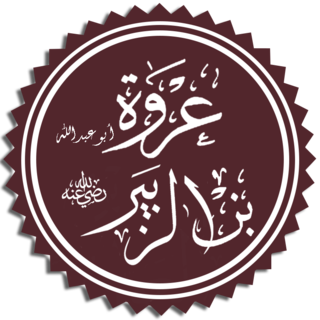 W
W'Urwah ibn al-Zubayr ibn al-'Awwam al-Asadi was among the seven fuqaha (jurists) who formulated the fiqh of Medina in the time of the Tabi‘in and one of the Muslim historians.
 W
WZaynab bint Ali, also spelled Zainab, was the daughter of Ali ibn Abi Talib and Fatimah bint Muhammad. The Islamic Prophet Muhammad was her maternal grandfather, and thus she is a member of his Ahl al-Bayt. She is often revered not only for her characteristics and actions, but also for her membership in, and continuation of, the biological line of Muhammad. Like other members of her family, she is considered to be a figure of sacrifice, strength, and piety in both the Sunni and Shia sects of Islam.
 W
WAbu al-Mughira Ziyad ibn Abihi, also known as Ziyad ibn Abi Sufyan, was an administrator and statesman of the successive Rashidun and Umayyad caliphates in the mid-7th century. He served as the governor of Basra in 665–670 and ultimately the first governor of Iraq and virtual viceroy of the eastern Caliphate between 670 and his death.